Bighead knapweed identification and control
About this weed
Bighead knapweed is a Class A noxious weed in King County. This means property owners in Washington state are required to eradicate it from their property. Bighead knapweed is on the Washington quarantine list, and it is illegal to buy, sell, or offer it for sale in the state.
Bighead knapweed is known as Centaurea macrocephala, and it is in the aster (daisy) family. Various common names include lemon fluff, globe centaury, and pineapple thistle.
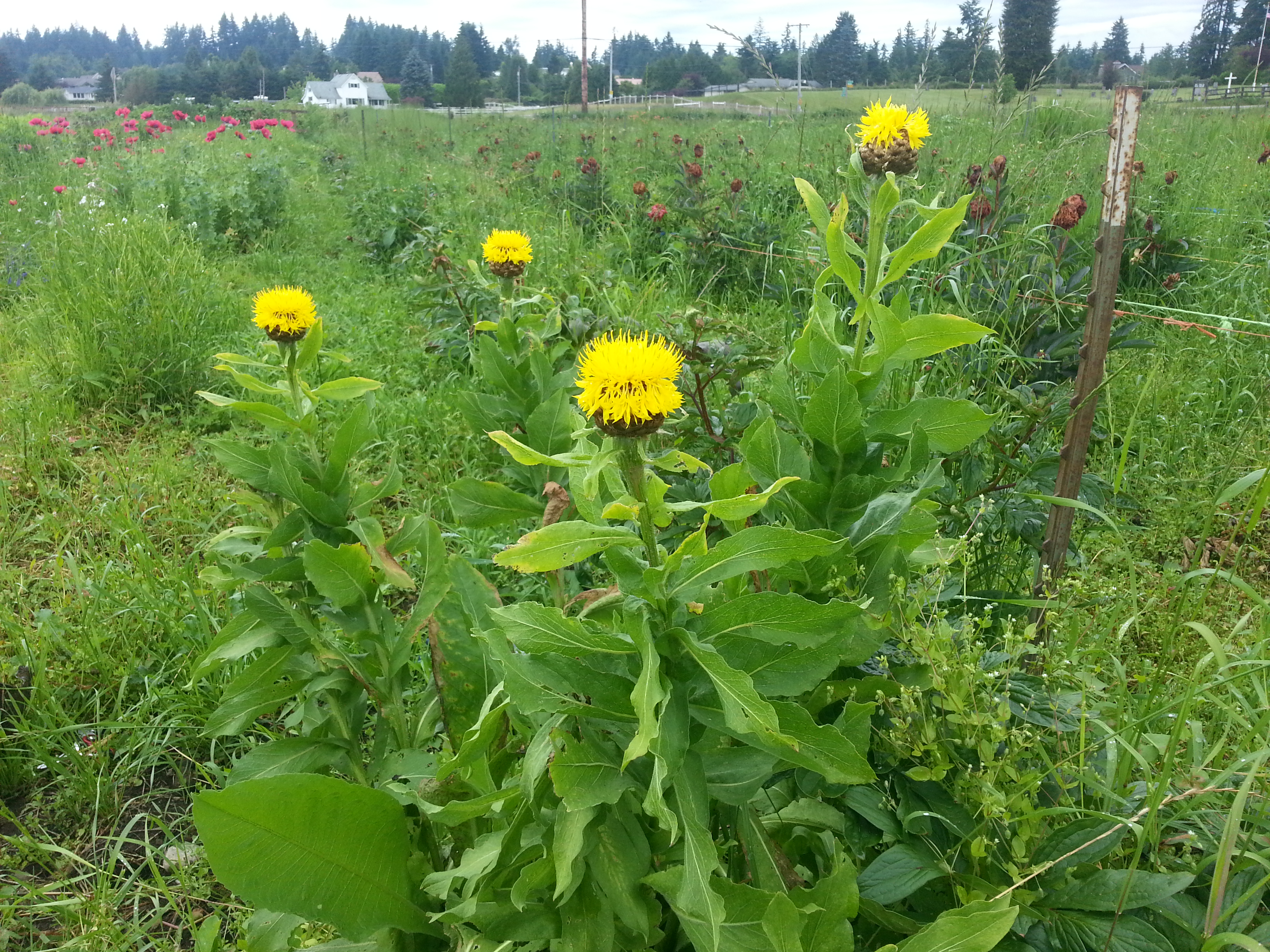
Why it’s a noxious weed
Prized for its showy flowers, bighead knapweed has been found escaping from gardens and spreading to nearby pasture areas, reducing forage for wildlife and livestock.
It can be very difficult to control once established and is a threat to our natural areas, including subalpine meadows (found on the higher slopes of mountains, just below the timberline).
Bighead knapweed infestations are rare in Washington state. The largest infestation is in Pend Oreille County, where control work on a 10-acre site has been in progress since 1990. It is often found as a garden ornamental or in cut flower arrangements.
Plant description
Bighead knapweed is a perennial (plants that have a life cycle of 2 or more years) that grows up to 5 feet tall, making it the tallest knapweed in Washington.
It has multiple erect, unbranched leafy stems that grow from a taproot. The plant typically grows a rosette (a circular cluster of leaves on ground level) the first year and flowering stems the following years. Plant stems have a single, showy, bright yellow flower at the top of the stem.
Flowerheads are globe-shaped and range from 1 to 3 inches in diameter. The bracts, or specialized leaves, at the base of the flower are light green to golden brown and have thin, papery, fringed edges.
The leaves are arranged alternately on the stem (or do not grow directly across from each other, but instead alternate down the stem). Leaves are broadly lance-shaped, up to 15 inches long at the base of the plant, becoming smaller as they move up the stem. Leaf edges range from toothed to smooth and may be hairy and gland dotted.
The plant flowers from July to September. It reproduces by seed, producing up to 200 seeds per flowerhead and spreading by wind, passing animals, humans, vehicles, and equipment.
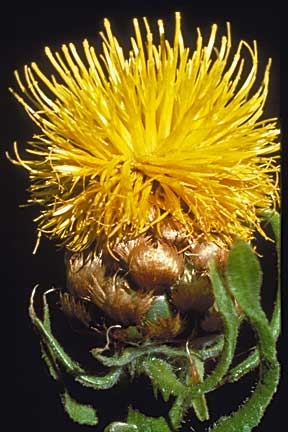
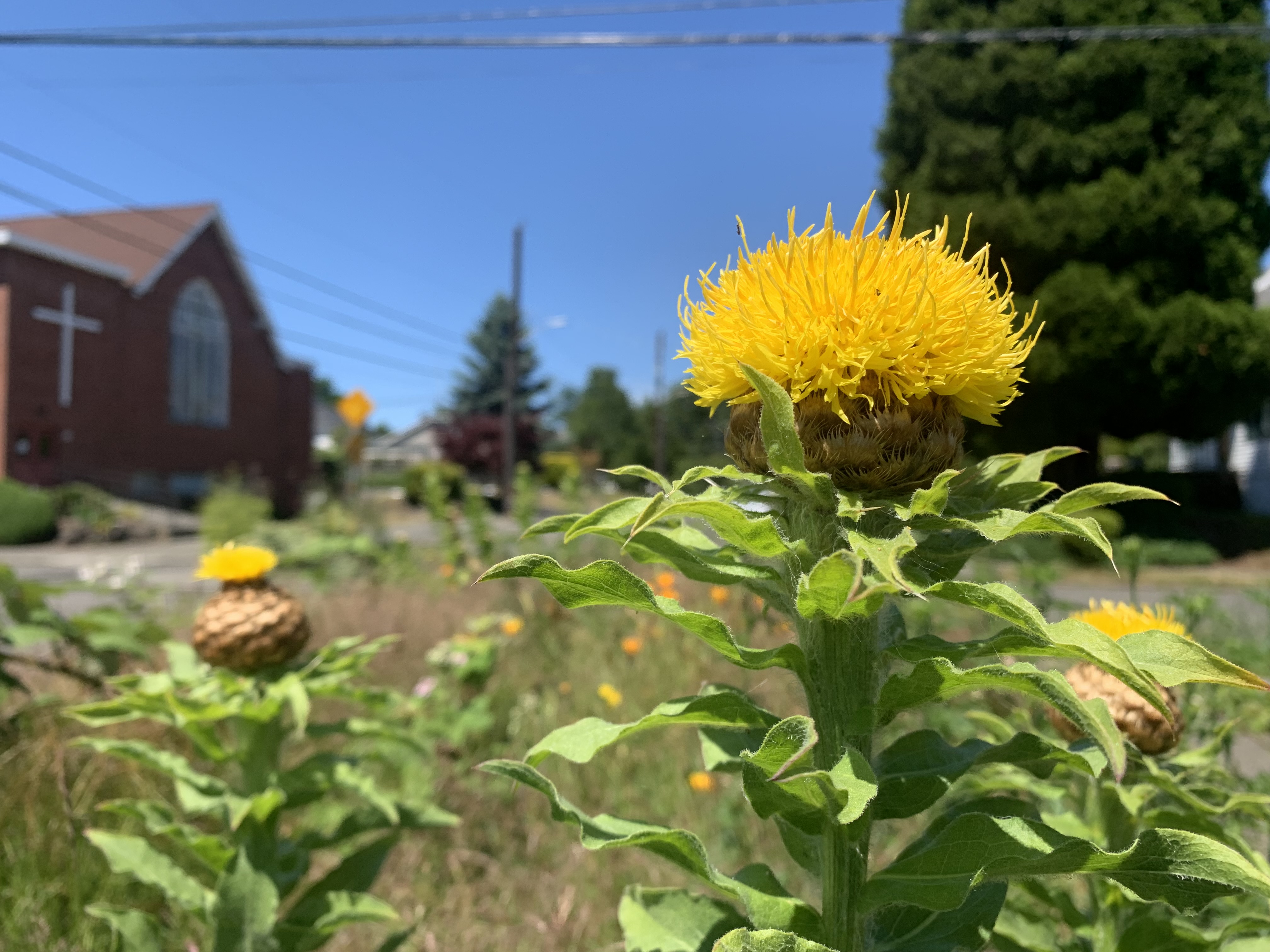
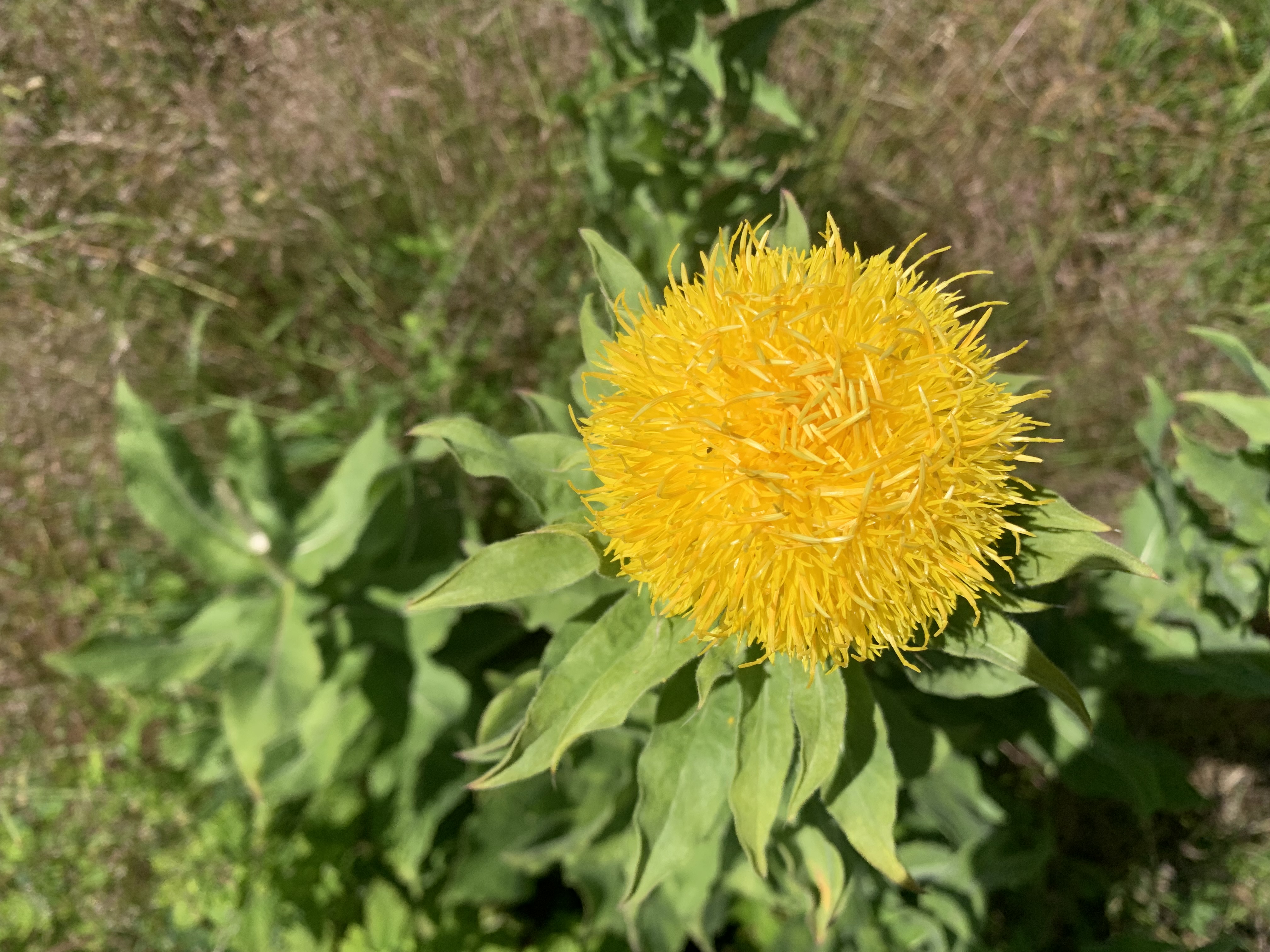
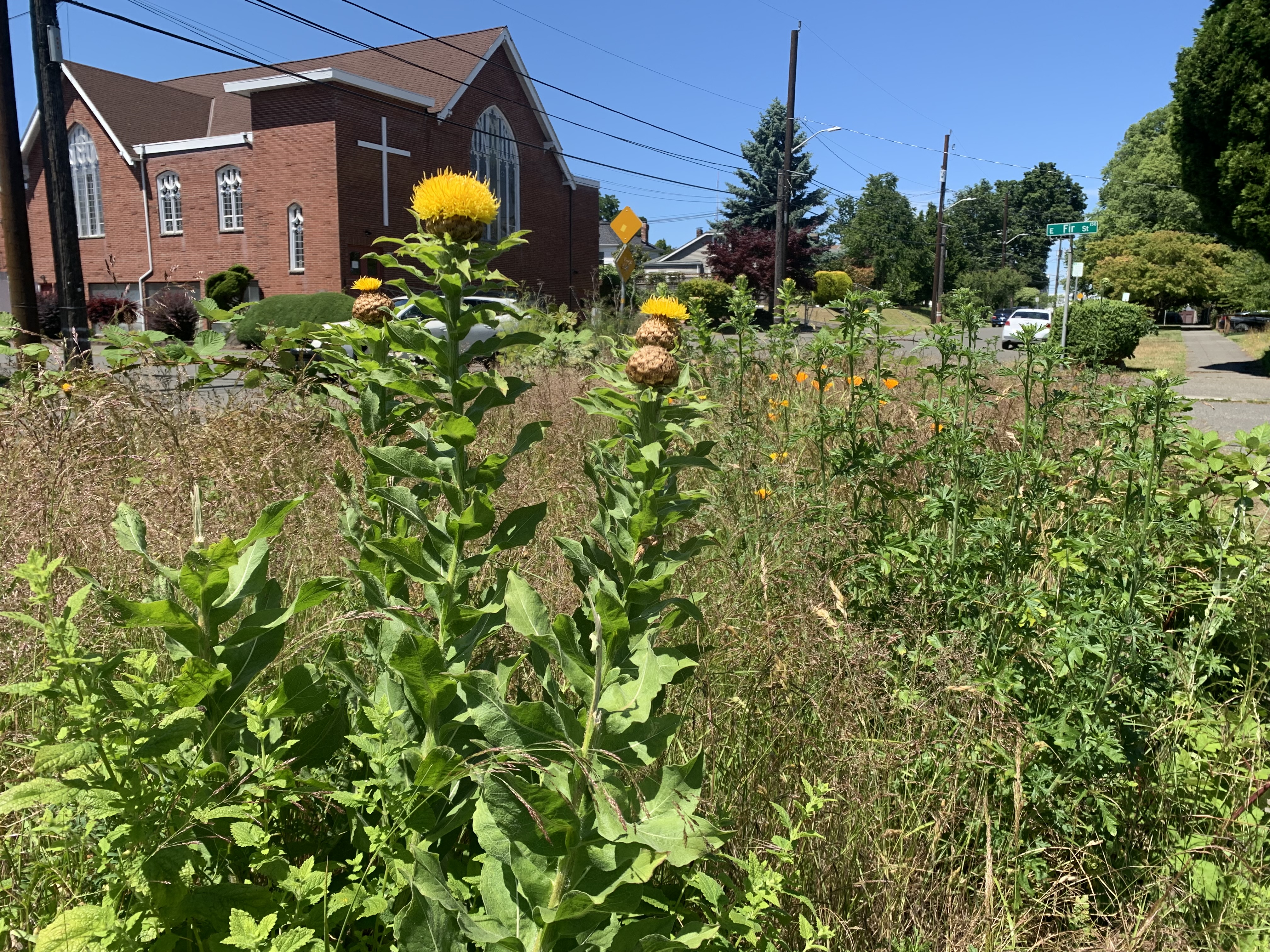
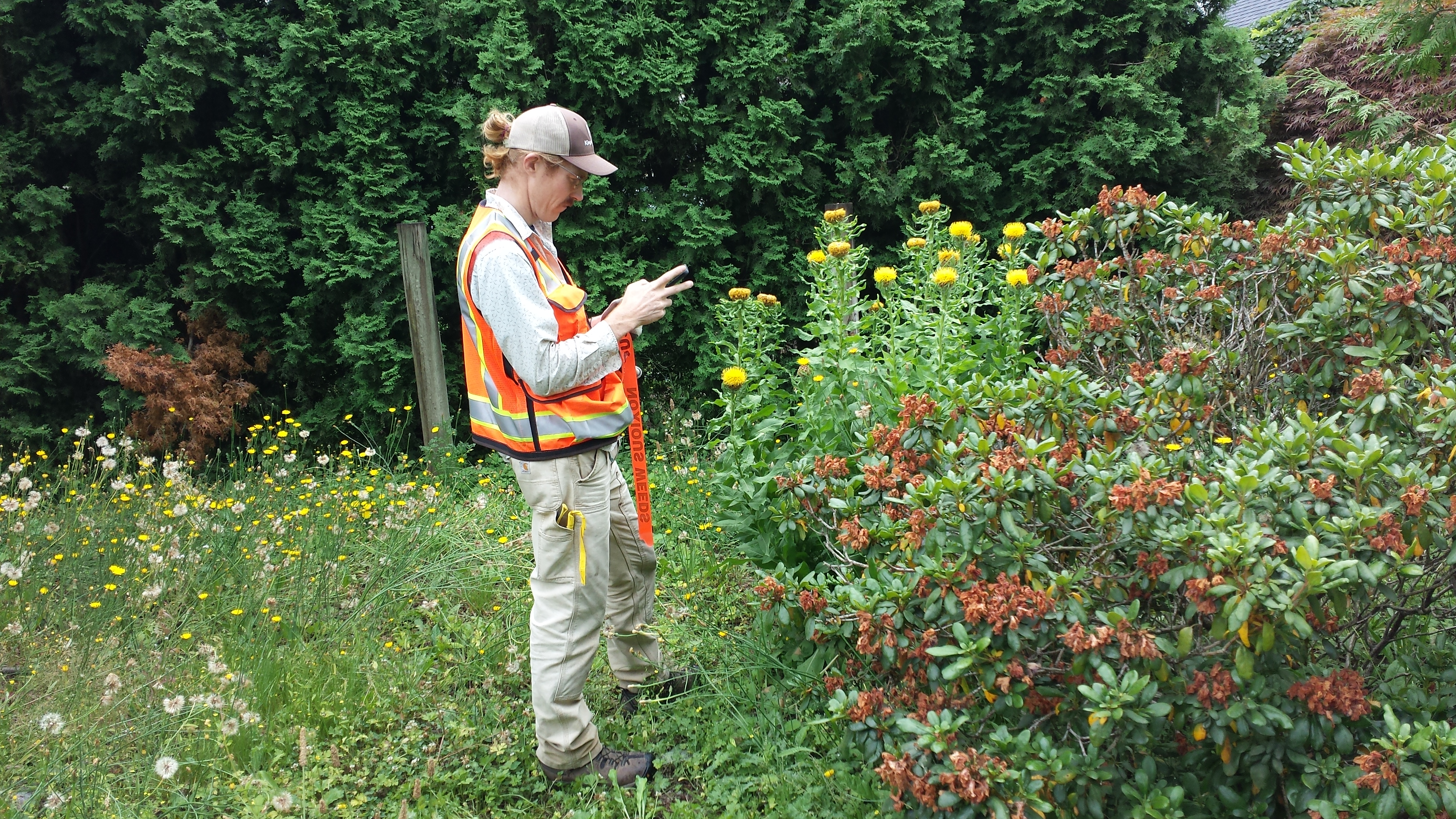
Be aware of look-alike plants
Puget balsamroot is a native plant that can be mistaken for bighead knapweed.
There are also some common garden flowers that look similar to bighead knapweed:
- Yellow dahlias
- Yellow chrysanthemums
- Yellow honeycomb butterfly bush
When in doubt, take photos and share them with us or report them on iNaturalist.
What to do if you find it
Property owners are required to control bighead knapweed on lands that they manage. Please let us know if you see bighead knapweed growing in King County.
Our program staff can provide you with site-specific advice on how best to remove it. We map all known locations of regulated noxious weeds to help locate new infestations in time to control them. For information in other counties in Washington state, contact your local weed board.
Control methods
We recommend using a combination of methods to control noxious weeds. In areas with few weeds, it is important to act quickly before they become harder to control. Make a long-term plan as it often takes several years to get rid of most weeds. Start in the least infested areas first and then move into more heavily infested areas.
Control methods are the same for both spotted and bighead knapweed. For more in-depth control information, read Best Management Practices (BMP) for spotted knapweed (303KB).
Manual control
Isolated small populations can be dug out using a shovel or stout trowel, making sure to remove all the roots. Hand pulling, however, is mostly ineffective due to breakage. The remaining plant will resprout from the crown. Once confident that all the roots have been removed, replant with ground cover, grass, or other desirable plants. Watch for regrowth from seeds. It is unknown how long seeds remain viable in the soil for this species.
Mechanical control
Repeated mowing may suppress the plants’ ability to produce seed, but plants will re-grow and flower again after a single mowing. Tilling and cultivation that buries seeds and plant matter below a depth of one and half inches can be effective, especially if the area is replanted with a healthy cover crop.
Chemical control
Stay safe when using herbicide:
- Always read the label before use.
- Wear a long-sleeved shirt, long pants, shoes, and eye protection.
- Follow state and local regulations.
Herbicides with 2,4-D and triclopyr are effective when stems are growing longer (usually May to June) before flowers open. These products are selective for broadleaf plants and will not harm grasses. Glyphosate (for example, Roundup) is also effective but will kill grasses as well. Apply glyphosate when bighead knapweed is budding before flowers open.
See the PNW Pest Management Handbook for the most current information and specific method for chemical control of knapweeds.
Disposal instructions
Bighead knapweed reproduces by seed, flower, and seedheads. These should be disposed of in the garbage.
Noxious Weed Disposal - Washington State Noxious Weed Control Board

 Translate
Translate